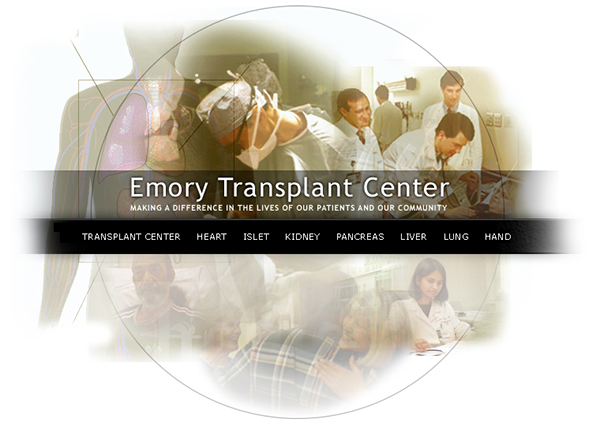
The goal of the Rolling Cohort Tool is to provide improved long-term outcomes for the Emory Transplant Center.
Kendra Bryant and Jeff Weaver, members of the Information Technology Data Solutions (IT Data Solutions) group, recently presented a demonstration of a business intelligence (BI) tool that uses the data warehouse to help doctors understand transplant success rates.
The monitoring tool, called the Rolling Cohort Summary and Dashboard, was the first tool at Emory to take raw data to create predictive BI. This usage of the tool allows the Transplant Center to look at graft patient survival rates across all of their organ donation programs and look at survival rates at 1 month, 1 year, and 3 years from surgery.
This type of data has been available in the form of spreadsheets that were time-consuming to create and prone to data entry errors. The Rolling Cohort data is in real time, giving doctors and patients the most up-to-date information possible. The key value of this tool is its graphical display provides an interface that is easy to read and interpret, allowing physicians better opportunities to make actionable decisions.
This graphic display is more meaningful to a clinical team because each patient’s outcome can be tracked against a Scientific Registry of Transplant Recipients (SRTR), which is the industry standard for survival data. The goal is to provide improved long-term outcomes.
A similar project that Kendra and Jeff are working involves looking at the data from the Kidney Transplant Program to analyze the effects of a new drug called Belatacept. Developed at Emory, Belatacept is used as a standard of care for kidney transplants. By examining outcomes based on various drug regimens, the team can look at conversion rates of the drugs, patient kidney functions over time, and are expanding the reports to include data about infections. The results should be improved understanding of drug effectiveness.
This improved data analysis is now being managed by a governance team, consisting of surgeons, epidepmioplogists, and infectious disease physicians, as well as members of the IT Data Solutions team. Following the weekly governance meetings, the team works to build and validate the reports needed by the Emory medical community.
